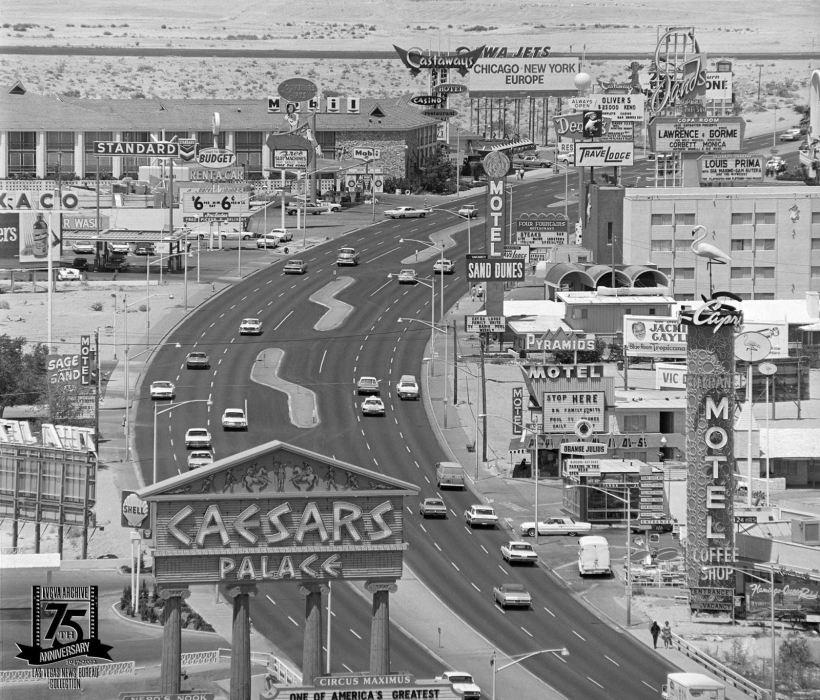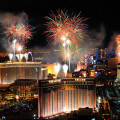
Las Vegas, often known simply as Vegas, has a history that’s as colorful and dynamic as the neon lights that define its skyline. Here’s a comprehensive look at its evolution:
Early History and Foundation
- Pre-Settlement: The area was originally inhabited by the Paiute tribe for centuries before European-American exploration. The region was a marshy oasis in the desert, which attracted early explorers.
- 19th Century: The area that would become Las Vegas was first significantly explored by Rafael Rivera in 1829, part of Antonio Armijo’s expedition aiming to establish a trade route between New Mexico and California, known as the Old Spanish Trail.
- Mormon Fort: In 1855, Brigham Young sent a group of Mormon settlers to Las Vegas to build a fort, which was abandoned a few years later due to various hardships, but it marked the first permanent European-American settlement.
- Railroad Era: The pivotal moment for Las Vegas came in 1905 with the auction of 110 acres by the San Pedro, Los Angeles, and Salt Lake Railroad. This land auction on May 15, 1905, essentially founded the city, leading to its incorporation on March 16, 1911.
Growth and Legalization of Gambling
- Gambling Legalization: In 1931, Nevada legalized casino gambling, which, coupled with the construction of the Boulder Dam (later renamed Hoover Dam), brought workers and money into the area, kickstarting Las Vegas’s transformation.
- The Mob Era: During the 1940s and 1950s, Las Vegas saw significant investment from organized crime, with figures like Bugsy Siegel opening the Flamingo in 1946, aiming to make Vegas glamorous. This era saw the construction of many casinos funded by mob money, transforming the city into a gambling and entertainment hub.
- Atomic Tourism: In the 1950s, atomic bomb testing became an unlikely tourist attraction, with mushroom clouds visible from the city, branding Las Vegas as an “Atomic City.”
Corporate Era and Mega-Resorts
- Howard Hughes: In the late 1960s, Howard Hughes moved into the Desert Inn, buying out casinos and starting the trend of corporate ownership over mob control, which helped clean up the city’s image.
- Mega-Resorts: The 1980s and 1990s saw the rise of mega-resorts like The Mirage, opened in 1989, funded by Wall Street through junk bonds, marking the shift towards family-friendly entertainment and massive themed resorts.
Modern Las Vegas
- Entertainment Capital: By the end of the 20th century and into the 21st, Las Vegas solidified its reputation as the “Entertainment Capital of the World,” with casinos, shows, conventions, and more, attracting millions of visitors.
- Sports and Expansion: Las Vegas has recently become home to major league sports with teams like the Vegas Golden Knights (NHL), the Las Vegas Raiders (NFL), and the Las Vegas Aces (WNBA), indicating its growth beyond gambling.
- Economic and Environmental Challenges: Despite its success, Las Vegas faces significant challenges like water scarcity, given its desert location, and economic fluctuations tied to tourism and gambling.
- Cultural Evolution: From a railroad town to a mob-run gambling haven, to a corporate-driven entertainment metropolis, Las Vegas has continually reinvented itself. Its history reflects broader themes of American entrepreneurship, entertainment, and the constant quest for reinvention.
Las Vegas’s story is one of transformation, from a desert stopover to one of the most famous cities in the world, known for its nightlife, casinos, and endless entertainment options, showcasing both the glitz and the gritty realities of rapid urban development in a challenging environment.







